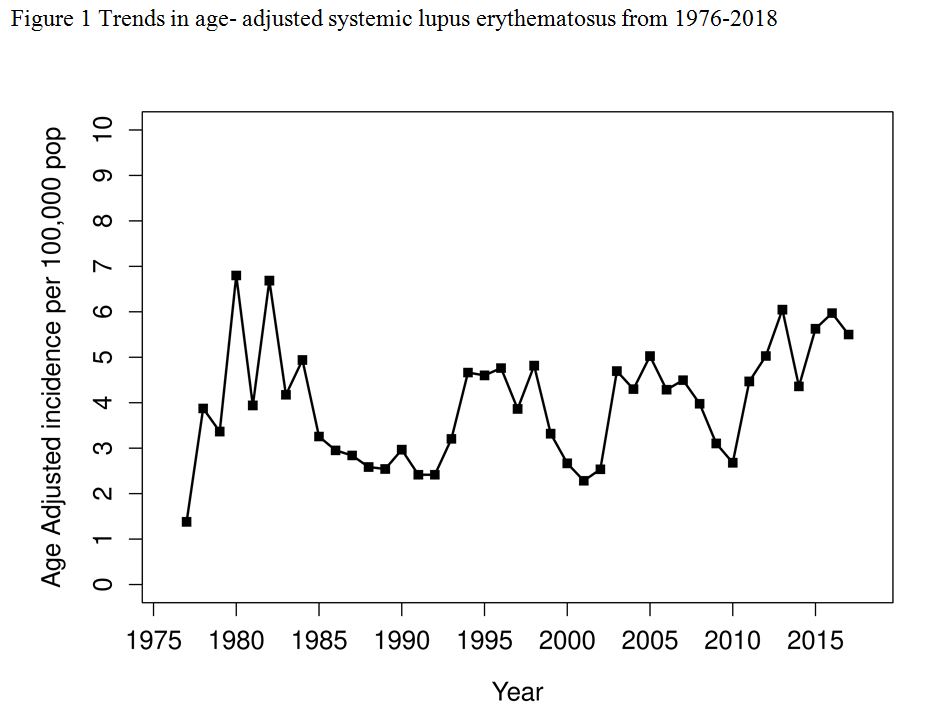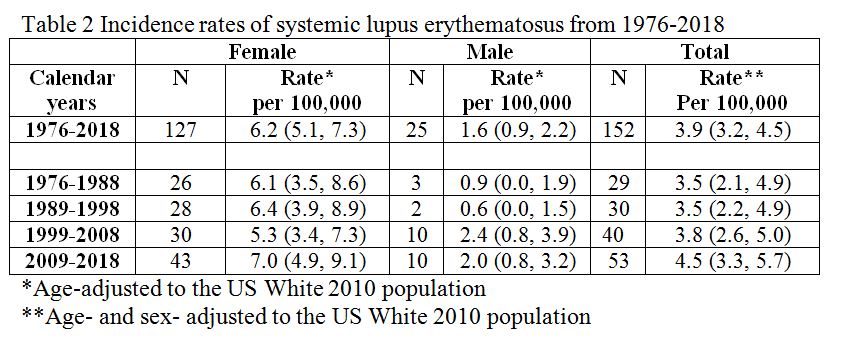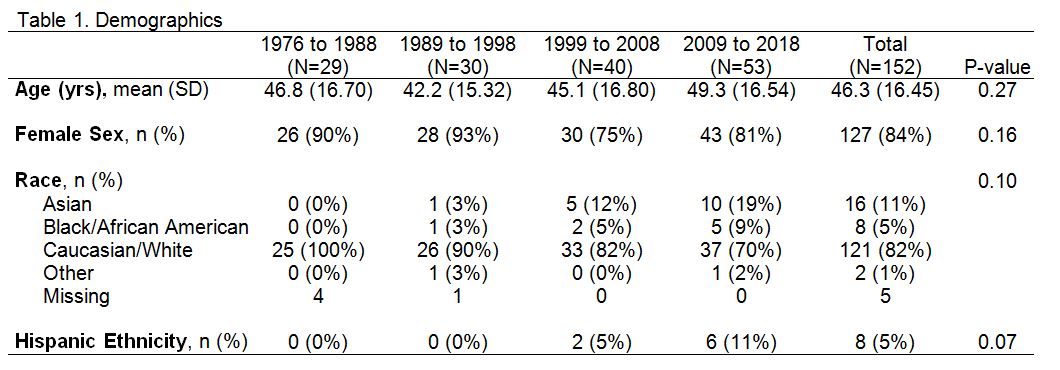Session Information
Date: Sunday, November 8, 2020
Title: Epidemiology & Public Health Poster III: Inflammatory Rheumatic Disease
Session Type: Poster Session C
Session Time: 9:00AM-11:00AM
Background/Purpose: Changes over time in the incidence of Systemic Lupus Erythematosus (SLE) remain uncertain. It is unclear if the variations in established SLE risk factors, such as the decline in smoking over time or the trend towards use of low-dose oral contraceptives, has had an impact in SLE incidence. We aimed to investigate secular trends in the incidence of SLE in adults from 1976-2018.
Methods:
Using established population-based research infrastructure that links the medical records of all the individuals in a geographically well-defined population, we identified all the incident SLE cases from 1976-2018 using diagnostic codes for cutaneous and systemic lupus and the following laboratory measures: anti-nuclear antibodies, anti-double stranded DNA, anti-Sm, anti-cardiolipin, anti-beta 2 glycoprotein 1 antibodies, complement, coombs and lupus anticoagulant. After an extensive medical record review, cases were classified based on the 1982 or 1997 American College of Rheumatology classification criteria, and we considered the date of meeting classification as the incidence date. Incidence rates were age‐ and/or sex‐adjusted to the estimated 2010 white population of the US. To compute 95% confidence intervals for incidence rates, it was assumed that the number of incident cases followed a Poisson distribution.
Results: We identified 152 incident SLE cases between the years 1976 and 2018. As detailed in Table 1, the mean age was 46.3 years (SD16.4), 84% were female. The racial distribution was 5% Black, 12% Asian, 82% Caucasian while 5% were Hispanic.
The overall SLE incidence was 3.9 (95%CI: 3.2, 4.5) per 100,000. The incidence rate in females was 6.2 (95%CI: 5.1, 7.3) while in males was 1.6 (95%CI: 0.9, 2.2) per 100,000. Age- and sex- specific incidence peaked at 40-49 years for females. In males there was an upward trend in the incidence after age 50. There was an increase over the years in the proportion of incident SLE cases in minorities.
The incidence of SLE increased 29% from 3.5 (95%CI: 2.1, 4.9) in 1976-1988 to 4.5 (95%CI: 3.3, 5.7) in 2009-2018 per 100,000 (Table 2). This increase in incidence was more pronounced in males with an increase of 0.9 to 2 per 100,000. The incidence of SLE seemed to have a 10-year cyclical pattern (figure 1).
Conclusion: Our 40-year population-based study suggests that the SLE incidence in adults had an overall 29% increase and has doubled in males over the last four decades. SLE has a cyclical pattern similar to other autoimmune diseases. It’s unclear if the increase in incidence is due to improvement in awareness and detection of SLE, changes in the racial make-up of the population, changes in lupus-related risk factors or a combination thereof.
 Trends in age- adjusted systemic lupus erythematosus from 1976-2018
Trends in age- adjusted systemic lupus erythematosus from 1976-2018
 Table 2 Incidence rates of systemic lupus erythematosus from 1976-2018
Table 2 Incidence rates of systemic lupus erythematosus from 1976-2018
To cite this abstract in AMA style:
Duarte-Garcia A, Hocaoglu M, Osei-Onomah S, Dabit J, Giblon R, Crowson C. Time Trends in the Incidence of Systemic Lupus Erythematosus: A 40-Year Study [abstract]. Arthritis Rheumatol. 2020; 72 (suppl 10). https://acrabstracts.org/abstract/time-trends-in-the-incidence-of-systemic-lupus-erythematosus-a-40-year-study/. Accessed .« Back to ACR Convergence 2020
ACR Meeting Abstracts - https://acrabstracts.org/abstract/time-trends-in-the-incidence-of-systemic-lupus-erythematosus-a-40-year-study/

